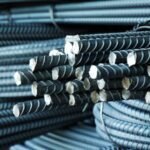
When it comes to construction, woodworking, or simple DIY projects, the importance of high-quality wire nails cannot be overstated. These small yet essential components play a crucial role in ensuring the stability and longevity of your work. In this comprehensive guide, we’ll delve into what makes wire nails of the best quality, how to identify them, and why investing in premium wire nails can make a significant difference in your projects.
What Are Wire Nails?
Wire nails are fasteners made from wire that is cut and shaped into nails. They are commonly used in various applications, including construction, carpentry, and crafting. Their strength and versatility make them an indispensable tool for professionals and hobbyists alike.
Key Characteristics of High-Quality Wire Nails
1. Material Quality
The material used to manufacture wire nails is paramount to their performance. High-quality wire nails are typically made from carbon steel, which offers a perfect balance of strength and flexibility. Stainless steel is another excellent option, particularly for projects exposed to moisture or harsh environments, as it provides superior rust resistance.
2. Manufacturing Precision
Precision in the manufacturing process ensures that each nail is uniform in size and shape. High-quality wire nails are produced using advanced machinery that guarantees consistent diameter, length, and head size. This uniformity is crucial for seamless insertion and maximum holding power.
3. Corrosion Resistance
Corrosion can significantly weaken nails, compromising the structural integrity of your project. The best wire nails are either galvanized or coated to resist rust and corrosion. Hot-dip galvanization, electroplating, and specialized coatings are common methods used to enhance durability and longevity.
4. Shank Design
The shank of the nail—the part that is driven into the material—can greatly influence its holding power. High-quality wire nails often feature various shank designs, such as smooth, ringed, or spiral, each providing different levels of grip. Ringed and spiral shanks are particularly effective in applications where maximum holding power is essential.
5. Point Type
The point of the nail affects how easily it can be driven into materials and how well it minimizes splitting. Diamond points are a common feature of high-quality wire nails, as they offer excellent penetration and reduce the risk of splitting wood.
How to Identify the Best Quality Wire Nails
1. Check the Material
Look for wire nails made from carbon or stainless steel. Ensure that any coating or galvanization is uniform and free from defects.
2. Inspect for Uniformity
Examine the nails for consistent size, shape, and head alignment. Any variations can indicate poor manufacturing practices.
3. Assess Corrosion Resistance
If possible, choose nails that are galvanized or have a proven corrosion-resistant coating. This is especially important for outdoor or high-moisture applications.
4. Evaluate the Shank and Point
Consider the type of shank and point that best suits your project needs. For maximum holding power, opt for ringed or spiral shanks. For delicate woodworking, a diamond point is preferable.
Benefits of Using High-Quality Wire Nails
1. Enhanced Durability
Using top-quality wire nails ensures that your construction or craft projects withstand the test of time. They provide robust support and resist environmental factors that could otherwise cause degradation.
2. Improved Performance
High-quality nails drive in more smoothly, reducing the effort needed and minimizing damage to materials. This leads to a cleaner, more professional finish.
3. Cost-Effectiveness
While premium wire nails might come at a higher initial cost, their longevity and performance can save you money in the long run by reducing the need for repairs and replacements.
4. Safety
Using reliable, high-quality nails minimizes the risk of structural failure, ensuring the safety of your projects and their users.



